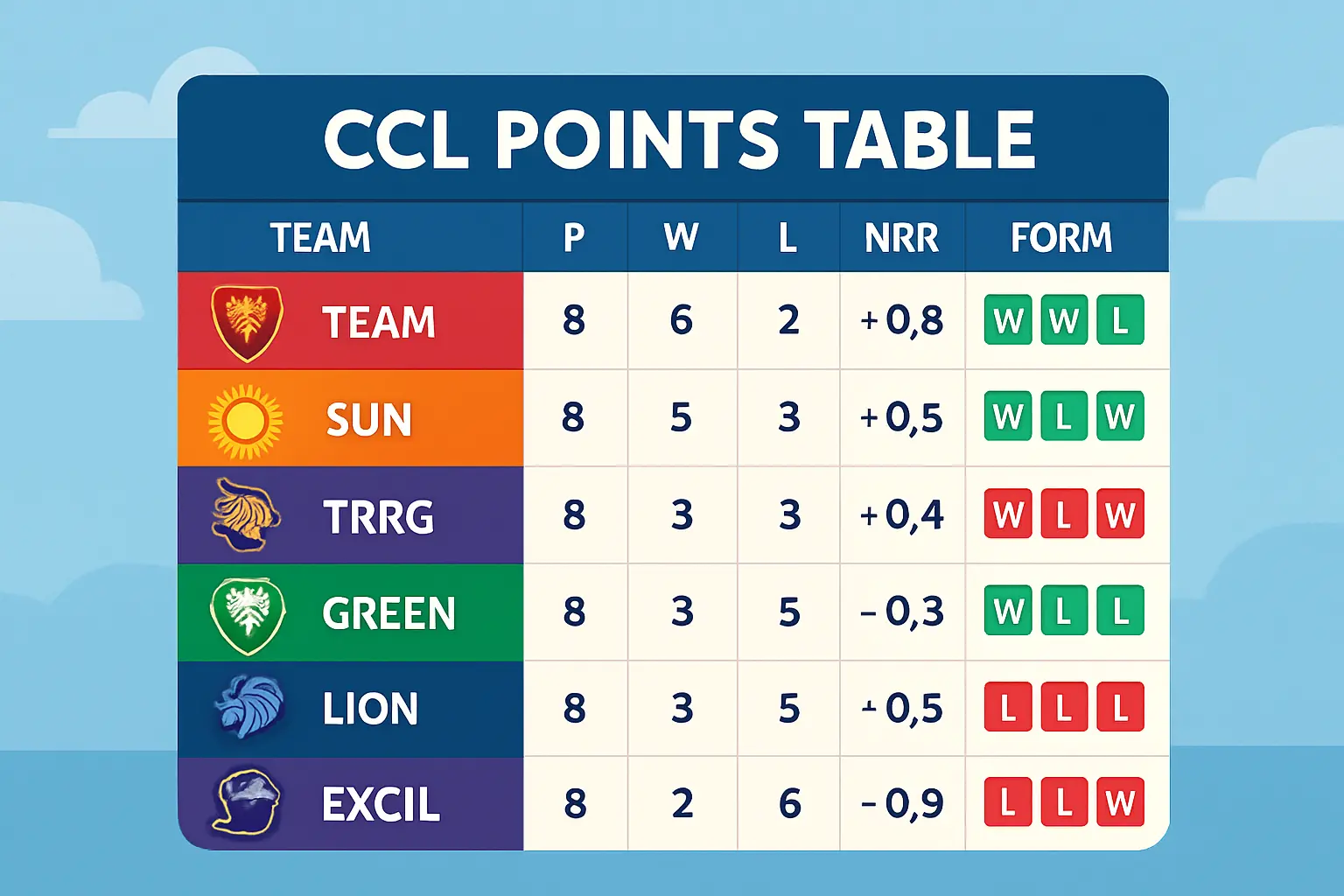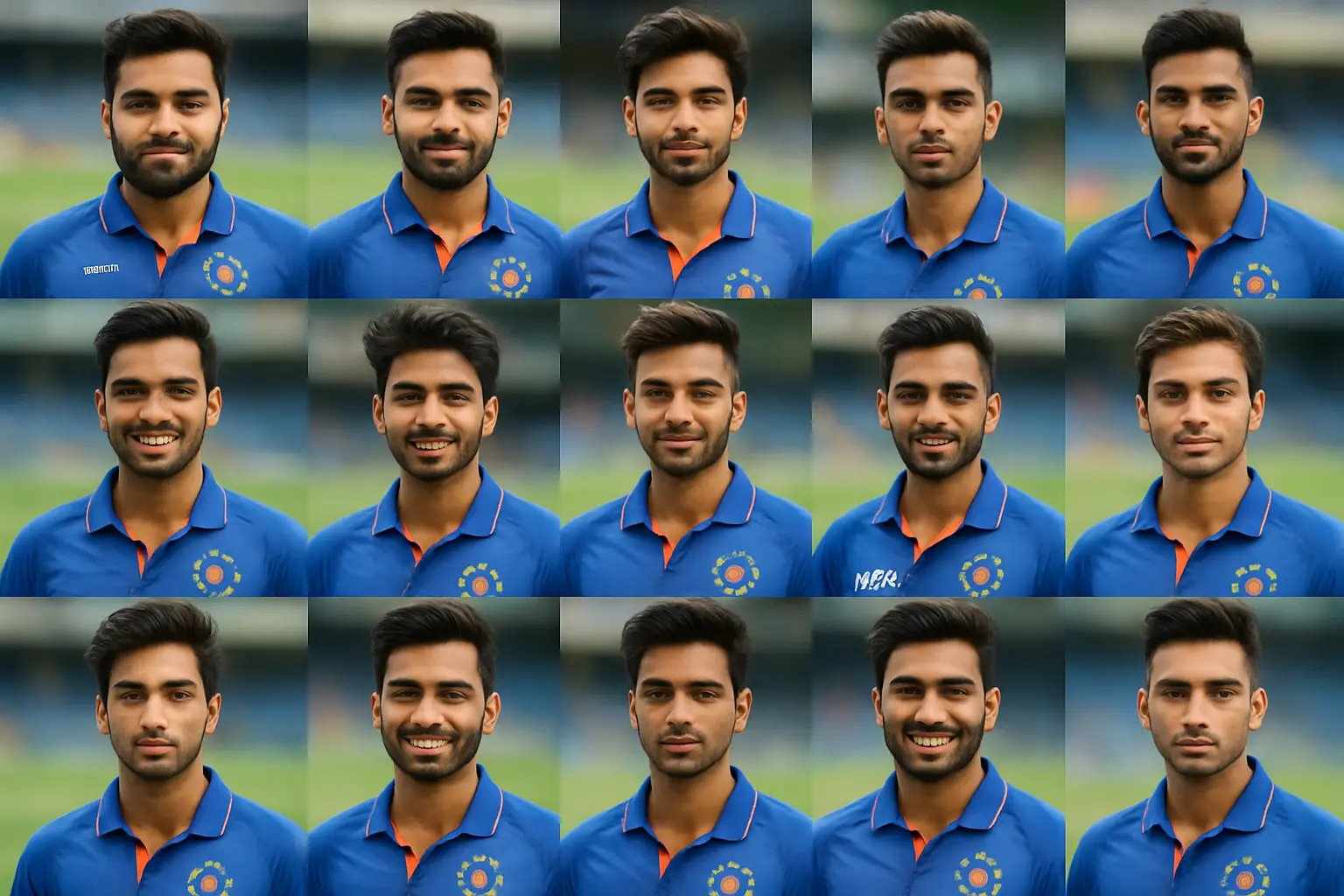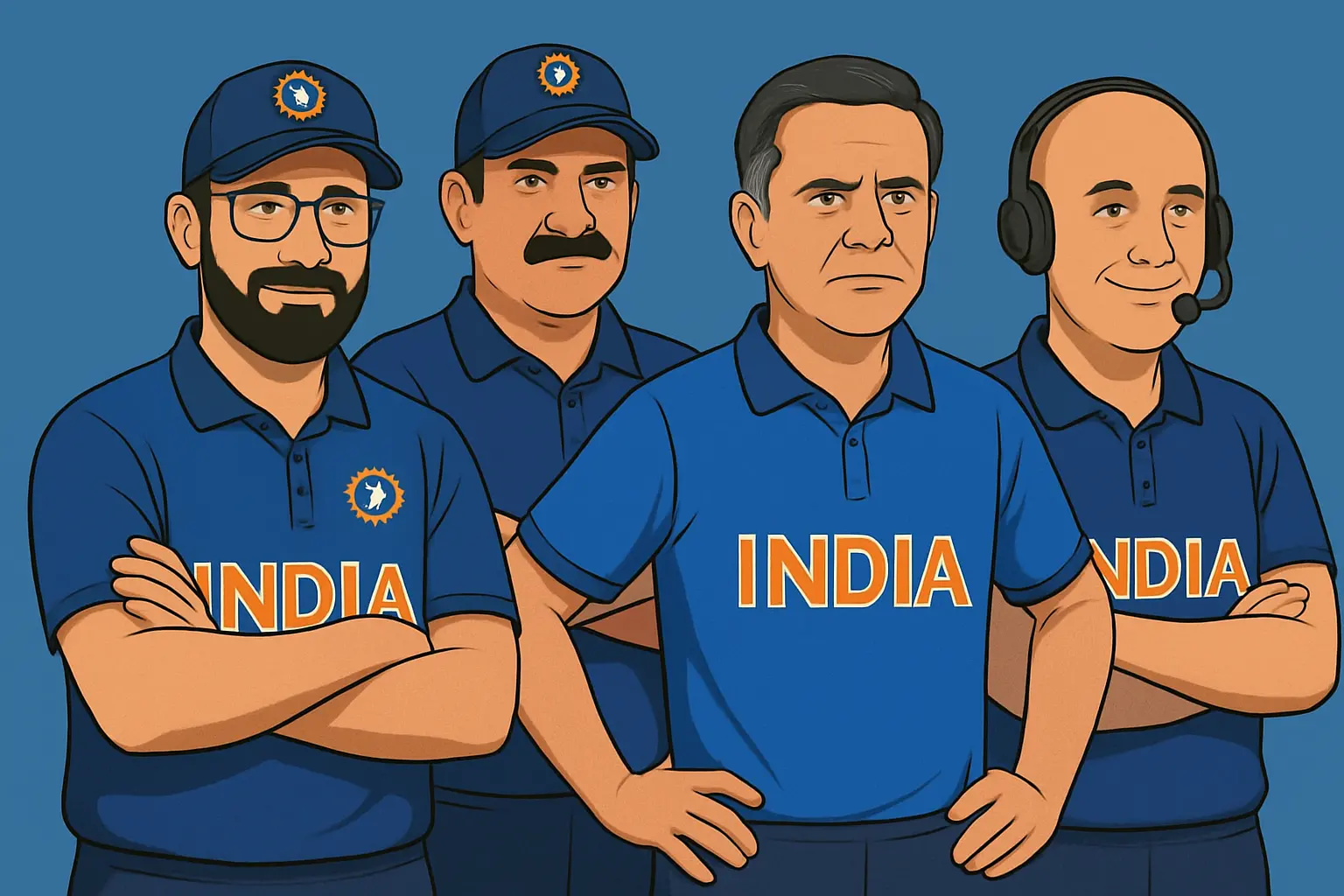There’s a special electricity in cricket when a batter locks eyes with a bowler and decides to test the limits of physics. One clean strike can lift a stadium. Six consecutive blows turn the ground into a carnival—teammates sprinting out from the dugout, commentary melting into noise, bowlers staring at the deck like it’s betrayed them. The phrase 6 ball 6 six, or six sixes in an over, belongs to that rarefied air. It’s brutal. It’s technical. It’s psychological. And it’s happened only a handful of times in top-level cricket, across formats and continents, with snowballing shockwaves each time.
This is the evergreen, expert hub for 6 ball 6 six: the complete, format-by-format record; player and bowler context; ball-by-ball nuance; what counts, what doesn’t; women’s and youth notes; and the related records fans always bring up—36 runs in an over, 35 with extras, and the curiosity of seven sixes. Save it, share it, and when the next one happens, expect this page to be the first to reflect it.
What “6 ball 6 six” actually means
Six sixes in an over requires six legal deliveries, each hit for a maximum. No-balls complicate the headline. If the bowler oversteps and the batter hits it out, the scoreboard may show 7, but that doesn’t qualify as six sixes in 6 balls. The clean, universally acknowledged record category is six legal balls, six sixes—36 runs in an over.
A couple of clarifications that matter:
- 36 runs is the highest possible off six legal balls without extras. If extras are involved—no-balls or wides—an over can exceed 36. That’s why you’ll see instances of 35 runs in a Test over, or even more in limited overs, which are extraordinary but technically different to 6 sixes in 6 balls.
- If a batter belts six straight but a no-ball sneaks into the sequence, statisticians treat it separately. The skill is still incredible; the record books, however, are strict.
A complete, all-format list of six sixes in an over
This list groups every verified top-tier instance of 6 sixes in an over. It spans international cricket (ODI and T20I), first-class (including county and Ranji Trophy), List A (domestic one-day), and domestic T20 leagues. Lesser-known or development-level instances are noted separately.
Master list (top-level instances)
- Sir Garfield Sobers — Nottinghamshire vs Glamorgan — First-class — bowler: Malcolm Nash — venue: Swansea — context: the pioneer, the first recorded set of six sixes in professional cricket.
- Ravi Shastri — Bombay vs Baroda — First-class (Ranji Trophy) — bowler: Tilak Raj — venue: Mumbai — context: matched Sobers in the Indian domestic giant.
- Herschelle Gibbs — South Africa vs Netherlands — ODI World Cup — bowler: Daan van Bunge — venue: St Kitts — context: first in ODIs; a performance that shut the door on a stubborn Associate nation.
- Yuvraj Singh — India vs England — T20 World Cup — bowler: Stuart Broad — venue: Durban — context: the most replayed six-sixes over ever; the classic born of a fiery exchange moments earlier.
- Kieron Pollard — West Indies vs Sri Lanka — T20I — bowler: Akila Dananjaya — venue: Antigua — context: arrived right after the bowler had taken a hat-trick; raw power meeting cold calculation.
- Jaskaran Malhotra — USA vs Papua New Guinea — ODI — bowler: Gaudi Toka — venue: Muscat — context: an Associate milestone from a wicketkeeper-batter with the cleanest swing.
- Hazratullah Zazai — Kabul Zwanan vs Balkh Legends — Afghan Premier League (T20) — bowler: Abdullah Mazari — venue: Sharjah — context: a left-hander muscling spin into submission on a ground famed for six-hitting.
- Leo Carter — Canterbury vs Northern Knights — Super Smash (T20) — bowler: Anton Devcich — venue: Christchurch — context: six identical moonshots from a minimal, repeatable swing.
- Ross Whiteley — Worcestershire vs Yorkshire — T20 Blast — bowler: Karl Carver — venue: Leeds — context: the left-hander went downtown six times; a classic county-night blitz.
- Thisara Perera — Sri Lanka Army Sports Club — List A — bowler: Dilhan Cooray — venue: Sri Lanka domestic — context: overwhelming power in a domestic one-day fixture that caught the world’s attention.
These are the core, widely verified entries across major cricketing databases and broadcasts. There are scattered claims at club, second XI, and age-group levels; notable development-level feats are included later.
Who has hit 6 sixes in international cricket
This is where cricket’s global spotlight truly burns and the archive never sleeps. Yuvraj Singh, Herschelle Gibbs, Kieron Pollard, and Jaskaran Malhotra delivered their six sixes in the international arena. Two did it in ODIs, two in T20Is. None have managed it in Tests—yet.
- Six sixes in ODI:
- Herschelle Gibbs vs Netherlands (van Bunge, legspin) at St Kitts. ODI World Cup.
- Jaskaran Malhotra vs Papua New Guinea (Gaudi Toka, medium pace) at Muscat. ODI.
- Six sixes in T20I:
- Yuvraj Singh vs England (Stuart Broad, pace) at Durban. T20 World Cup.
- Kieron Pollard vs Sri Lanka (Akila Dananjaya, spin) at Antigua. T20I series.
Has anyone hit 6 sixes in Test cricket?
No player has hit six sixes in a single over in Test cricket. The record for the highest runs in a Test over is, however, spectacular—helped by extras. The purest 6 sixes record remains untouched in the long format. If it ever happens, it will send a shock through the sport, because the red-ball chess match offers repeated resets: deeper fields, defensive plans, longer spells, and bowlers who live off accuracy and ego-control. Six out of the park in a Test over would be a tactical revolution as much as a highlight.
All instances by format: the granular view
International (ODI and T20I)
- Herschelle Gibbs (ODI World Cup, St Kitts)
- Bowler: Daan van Bunge
- Match context: clearance hitting through the line, into the wind, off legspin that started straighter and drifted more as the over wore on.
- Signature blow: the fifth six, dead-straight, authority writ in the backlift.
- Jaskaran Malhotra (ODI, Muscat)
- Bowler: Gaudi Toka
- Match context: an Associate landmark. Clean leverage through midwicket and long-on, matched by a calm back-and-across trigger.
- Yuvraj Singh (T20 World Cup, Durban)
- Bowler: Stuart Broad
- Match context: already volcanic after a verbal duel with Andrew Flintoff; Yuvraj shaped early and hit late, using the pace.
- Bonus record: fastest T20I fifty off 12 balls in that same innings.
- Kieron Pollard (T20I, Antigua)
- Bowler: Akila Dananjaya
- Match context: Dananjaya had just snared a hat-trick; Pollard trusted his arc and hit through the spin with a powerful base.
First-class
- Sir Garfield Sobers (Swansea)
- Bowler: Malcolm Nash (left-arm seam/spin)
- Match context: Nash experimented with a slower style; Sobers responded with six that still echo. A famous detail: one of the hits was caught but the fielder stepped beyond the rope—still six.
- Ravi Shastri (Mumbai)
- Bowler: Tilak Raj (left-arm spin)
- Match context: a demand to accelerate, answered with a remorseless sequence down the ground and over midwicket. Shastri’s temperament and long levers were perfect for the task.
List A (domestic)
- Thisara Perera (Sri Lanka domestic one-day)
- Bowler: Dilhan Cooray
- Match context: a momentum storm unleashed mid-innings. Perera’s arc favors cow corner but the sequence included straight and extra-cover lift.
Domestic T20 leagues
- Hazratullah Zazai — Afghan Premier League (Sharjah)
- Bowler: Abdullah Mazari (left-arm spin)
- Match context: Zazai often loads his base early; here he simply never blinked, repeating the same movement as the ball spun into his slot.
- Leo Carter — Super Smash, Christchurch
- Bowler: Anton Devcich (left-arm spin)
- Match context: Devcich tossed it up, Carter trusted his range—six times over long-on and long-off with barely a change in bat swing.
- Ross Whiteley — T20 Blast, Leeds
- Bowler: Karl Carver (left-arm spin)
- Match context: full commitment to the arc across the line; the fields changed, the length didn’t, the bat kept whistling.
Bowler list: the other side of the tale
It takes nerve to bowl the next ball after a six, and profound courage to complete the over. This list acknowledges the bowlers involved—no mockery here, just the honest ledger of a brutal craft.
- Malcolm Nash — first-class — conceded six to Sir Garfield Sobers.
- Tilak Raj — first-class (Ranji Trophy) — conceded six to Ravi Shastri.
- Daan van Bunge — ODI — conceded six to Herschelle Gibbs.
- Stuart Broad — T20I — conceded six to Yuvraj Singh.
- Akila Dananjaya — T20I — conceded six to Kieron Pollard.
- Gaudi Toka — ODI — conceded six to Jaskaran Malhotra.
- Abdullah Mazari — domestic T20 — conceded six to Hazratullah Zazai.
- Anton Devcich — domestic T20 — conceded six to Leo Carter.
- Karl Carver — domestic T20 — conceded six to Ross Whiteley.
- Dilhan Cooray — List A — conceded six to Thisara Perera.
Patterns that coaches talk about in vault rooms: left-arm spin is overrepresented, especially in domestic T20, because risk-reward matchups favor slog-sweeps and long-on launches to the batter’s dominant arc, particularly for left-handers. In international cricket, pace has also suffered; the white ball skids and, if it lands fractionally short, disappears. Nerves magnify everything. One mistimed call, one stubborn length, and the over snowballs.
Player spotlights: how the sixers actually happened
Yuvraj Singh 6 sixes vs Stuart Broad, T20 World Cup, Durban
This wasn’t a routine power-play cameo. It was a brushfire that started two minutes earlier at the non-striker’s end. Andrew Flintoff said a few things. Yuvraj replied, and suddenly Broad had the worst seat in the house. Ball one went deep into cow corner—fast wrists and a full follow-through. Ball two was deeper, higher, same arc. For ball three, Broad tried wider, but Yuvraj’s weight transfer was perfect; he reached it and carved it over point. Ball four: straight back. Ball five: a pickup flick from a length that shouldn’t disappear, except it did. Ball six: the classic whip over deep midwicket with that open-chested flourish. The entire over was a masterclass in early pick-up and late contact, the bat traveling through a power zone as if guided. From there, a 12-ball fifty—the fastest T20I milestone—felt like a footnote.
Herschelle Gibbs 6 sixes vs Daan van Bunge, ODI World Cup, St Kitts
Conditions at Warner Park can be capricious—trade winds, small pockets, a thin margin for error. Van Bunge’s legbreaks started flatter, then slowed, then tried a little more air. Gibbs was too early for the first two and still cleared the fence; by ball three the hands were in total control. A straight blow stood out, laced with violence and precision. Gibbs didn’t slog; he drove hard, as if the ball had been captured by his forearms. The over didn’t just kill the contest, it changed how teams thought about momentum against spin in one-day cricket.
Sir Garfield Sobers 6 sixes vs Malcolm Nash, Swansea
The romance of this one endures because it happened in the long format, and because the shots were outrageous. Nash, trying a slower style and different angles, gave Sobers balls that could be muscled. Sobers’ backlift was regal; the ball disappeared to all parts. A famous moment: a boundary catch that was clean in the field but the fielder over-balanced beyond the rope—still six. You could argue that Sobers taught generations that an over can be owned by a batter with footwork, rage, and timing.
Ravi Shastri 6 sixes vs Tilak Raj, Mumbai
Shastri at the crease reads like an engine room: big frame, big levers, the patience to wait, then crush. Against Tilak Raj he stepped into the line, sometimes even clearing his front leg to open access over midwicket. The repetition made it beautiful. The last two were the most emphatic, because everyone knew what was coming; he did it anyway. It’s easy to forget how rare clean sequences were in the red-ball world then—fields were deeper, captains more willing to shut a game down. This was a breach in that doctrine.
Kieron Pollard 6 sixes vs Akila Dananjaya, T20I, Antigua
The bowler had just pulled off a hat-trick. Lesser mortals wait it out. Pollard did the opposite. He trusted his range, especially against a spinner who relies on deception rather than bigger turn. Pollard’s trick is mechanical purity under pressure—he doesn’t overswing. He braces, rotates, and lets the ball meet the bat. The over was simply six of those, spooled back to back. In micro, he read the length before the deception; in macro, he erased the hat-trick from the game narrative in one swing cycle.
Jaskaran Malhotra 6 sixes vs Gaudi Toka, ODI, Muscat
The version of Jaskaran that day looked like a player who had practiced this exact drill. Toka’s pace sat in the high “slot-able” range; Jaskaran’s backlift and posture stayed compact. A couple went into the arc from long-on to deep midwicket—the rest were controlled spins of the hips. Associates thrive on moments like these, and this was one that told the room: the gap is narrowing.
Hazratullah Zazai 6 sixes vs Abdullah Mazari, APL, Sharjah
Zazai’s aggression has a signature—no backfoot retreat, a heavy base, an explosive downswing. Mazari tossed it up in the classic left-arm spinner arc; Zazai kept picking the same window, again and again. Sharjah compresses space; with the wind helping, the ball was halfway to the road each time. Pack the leg side, bowl wider? He followed. Drag it short? The hands rolled over neatly. It was inevitable by ball four.
Leo Carter 6 sixes vs Anton Devcich, Super Smash, Christchurch
What made this unique was that Carter looked almost bored by the drama. No flourish, no fall-away. Six carbon copies, mostly straight or just to the leg side of straight. That tells you Devcich kept searching the same spot and Carter never overreached for more. The best six-hitting can look strangely calm.
Ross Whiteley 6 sixes vs Karl Carver, T20 Blast, Leeds
Crowded domestic night, white ball under lights, and a left-hander who has always hit a heavy ball. Carver looked for slower, higher, then skiddier. Whiteley planted his front leg, opened the hips, and let the bat slice through a groove. Some shots cleared easily, others just enough. The sequence finished fast, leaving the bowler staring at the hand that had held the seam like it had lied to him.
Thisara Perera 6 sixes vs Dilhan Cooray, Sri Lanka List A
Perera’s two modes—bulldozer and blowtorch—went blowtorch. Cooray’s control of pace and length deserted him for six balls; Perera’s swing speed did not. He took the leather to cow corner and long-on, but also drove inside-out. On domestic circuits, these overs change squad perceptions; senior pros get a different kind of space in the dressing room afterward.
Records explained: 36 in an over vs 35-plus with extras
- Pure 36: This is the canonical 6 sixes in 6 balls—no extras. The moments above sit in this basket.
- 35 in a Test over: Large Test over tallies often involve no-balls or wides. They’re terrific feats but form a separate lineage to the pure “six sixes” record.
- The “7 sixes in an over” curiosity: Ruturaj Gaikwad smashed seven sixes in a List A over because of no-balls. This does not count as six sixes in 6 balls, but it’s an allied record in the “highest runs in an over” family and deserves its own pedestal.
Is 36 the ceiling? For the pure category, yes. For over totals, no. With no-balls and wides, the scoreboard can spike beyond 36. That’s how you’ll see a Test over or a domestic one-day over outpace the six-six baseline.
What it takes to hit 6 sixes: the micro-truth
- Match-up mastery: The left-hander vs left-arm spin duel shows up again and again. Angles bring the ball into the arc. For right-handers, legspin landing short or full in sequence is the red carpet.
- Pre-contact calm: The great sixers don’t muscle from the start. They build a base, read length early, and keep the head still. From there, clearance is a bat-speed problem.
- Sequence management: After two or three sixes, the bowler and captain change fields, change pace, change length. The batter must anticipate. Good hitters premeditate just enough to cover both full and short. Elite ones keep both options live.
- Wind and boundary geometry: St Kitts, Durban, Sharjah—grounds with their own microclimates. Hitters use crosswinds; bowlers often forget which side is shorter under pressure.
- Ego and patience: The best moment to abandon the 6-in-a-row mission is ball five if the bowler nails a yorker. The hardest thing is to let one go. That’s why sequences are so rare—the batter must refuse the sensible option.
Bowlers who concede 6 sixes: what actually goes wrong
- Repeating a faulty length: You can miss once. If you miss the same way twice, the rest of the over may already be written.
- Field paralysis: Captains can freeze. There’s no shame in posting your most distant boundary rider earlier, or in burning a time-out in franchise cricket.
- Fear of the wide: Trying to bowl “too wide” to starve the slog can deliver floaters that are actually easier to reach, especially for batters with long levers.
- Slow, slower, slowest: Pace off is brilliant when you land it on a hard length. Floated without disguise, it’s chum in the water.
Venues and geographies with six sixes in an over
- Durban: Yuvraj’s theatre, pace onto the bat, boundaries that invite a cross-bat whip.
- St Kitts: Crosswinds and cricket’s Caribbean carnival, site of Gibbs’ ODI milestone.
- Antigua: Caribbean wickets vary, but white-ball nights can be lively. Pollard owns those vibes.
- Muscat: Associate cricket’s rising heartland; Jaskaran’s ODI monument came from here.
- Sharjah: The original six-hitter’s amphitheatre.
- Christchurch: Big square boundaries, but Carter’s shots were remarkably straight—pure swing.
- Leeds: English summer nights, grip and skid. The ball can carry when it’s struck right.
Women’s, youth, and development-level notes
Women’s cricket: There is no verified six-sixes over at international level in the women’s game yet. Big-hitting has grown rapidly—remember record-breaking T20I hundreds from the likes of Deandra Dottin—but no confirmed, top-tier 6-in-6 sequence is on the books. At lower tiers, there are scattered reports, but nothing firmly catalogued at the level this hub tracks.
Youth and second XI: These circuits have sprung surprises. Jordan Clark once struck six sixes in an over in English Second XI cricket—a development-level note that foreshadowed his senior career’s power. Academy and school-level feats are reported from South Asia and England each season; we only log instances corroborated by official scorecards and league bodies.
Most sixes in an over: beyond the pure six-six
It’s natural to conflate six sixes with most runs in an over, but they’re cousins, not twins. You’ll see Test overs inflated by no-balls and edges; you’ll find domestic one-day overs that balloon due to wides. These are glorious spectacles, but in the grand taxonomy, the “six sixes in 6 balls” marker remains its own apex predator.
Table: Six Sixes in an Over — Master Roll
| Player | Team/League | Format | Bowler | Venue/City | Notes |
|---|---|---|---|---|---|
| Sir Garfield Sobers | Nottinghamshire vs Glamorgan | First-class | Malcolm Nash | Swansea | First recorded six-sixes sequence |
| Ravi Shastri | Bombay vs Baroda | First-class (Ranji) | Tilak Raj | Mumbai | Acceleration masterclass |
| Herschelle Gibbs | South Africa vs Netherlands | ODI | Daan van Bunge | St Kitts | First in ODIs |
| Yuvraj Singh | India vs England | T20I | Stuart Broad | Durban | Also fastest T20I fifty in same innings |
| Kieron Pollard | West Indies vs Sri Lanka | T20I | Akila Dananjaya | Antigua | Followed a hat-trick over |
| Jaskaran Malhotra | USA vs Papua New Guinea | ODI | Gaudi Toka | Muscat | Associate landmark |
| Hazratullah Zazai | Kabul Zwanan vs Balkh Legends | APL T20 | Abdullah Mazari | Sharjah | Left-handed hitting clinic |
| Leo Carter | Canterbury vs Northern Knights | Super Smash T20 | Anton Devcich | Christchurch | Six near-identical swings |
| Ross Whiteley | Worcestershire vs Yorkshire | T20 Blast | Karl Carver | Leeds | County-night thunder |
| Thisara Perera | Army Sports Club | List A | Dilhan Cooray | Sri Lanka domestic | Domestic one-day rampage |
Tactical blueprint for batters chasing 6 sixes
- Ball 1: Announce your arc. If you’re a left-hander vs left-arm spin, clear the front leg and open the angle to midwicket. If pace, trust the straight hit or the pick-up over fine leg if it’s short.
- Ball 2: Expect the mirror image. If the bowler went full, look a touch shorter; if short, expect fuller. Keep your head still and don’t overhit—distance comes from timing.
- Ball 3–4: Fields change. The bowler will try wider lines and slower balls. Pre-empt by committing to a base that lets you reach outside off without falling over.
- Ball 5: The hardest. This is where discipline wins. If the bowler nails a yorker, sometimes the smart play is to bank five sixes and a single. But in lore and legend, the great ones stay.
- Ball 6: Don’t chase a headline. Chase your arc. If you’ve been hitting straight, stay straight. If cow corner has been your friend, don’t get cute.
Tactical blueprint for bowlers under siege
- Change the over’s tempo: Slow the game down. Reset field, reset breath, reset plan.
- Kill the slot: Either higher than the bat swing (bouncer with protection) or lower (yorker). Middle is death.
- Be honest with off-stump wides: If your captain accepts the risk, a wisely executed wide outside the reach zone can break the sequence at the cost of one run.
- Use the leg-side boundary rider early: Hiding him after ball three is too late.
- Disguise first, length second: Deception without length control is charity.
Bowler psychology: handling the aftershock
Players who’ve lived this will tell you the walk to your mark after ball four is the loneliest in cricket. The trick is to avoid the hero ball. The crowd wants a miracle; you need a plan. The calmest overs after chaos come from bowlers who pick one option and execute it twice in a row. The worst come from bowlers who try four different deliveries in four balls and miss every mark.
Venues with six-sixes legacy and what they teach us
- St Kitts and Sharjah underline boundary geometry and wind. If you’re a spinner, you cannot float into the wind without protection.
- Durban and Antigua remind pacers that pace-on can either win you the over or gift the arc. You can’t live at back-of-a-length once the batter’s set—go wider, or go fuller than feels comfortable.
- Christchurch and Leeds show that even classic cricket cities will bow to repetition. If your length doesn’t change, your fate won’t either.
Video and highlights: how to watch the full over, ball by ball
Television rights make direct embeds fluid, but these overs live on official highlights and digital platforms:
- Yuvraj Singh vs Stuart Broad: ICC and tournament archives carry multilingual commentary; Hindi and English cuts exist.
- Herschelle Gibbs vs Daan van Bunge: ICC’s World Cup anthology features the full over.
- Kieron Pollard vs Akila Dananjaya: West Indies Cricket’s official channels have long-form highlights.
- Jaskaran Malhotra vs Papua New Guinea: USA Cricket and ICC pathway coverage include the sequence.
- Domestic sequences (Zazai, Carter, Whiteley, Perera): League channels and boards’ social media provide clips; many are available in HD and longer match packages.
When searching, “full over,” “ball by ball,” and “commentary” modifiers help; add “hindi commentary,” “english commentary,” or “4K” based on preference. Rights vary by region, so streaming availability can differ.
FAQs and clean answers
How many players have hit six sixes in an over at top level
Counting major, verified competitions across formats, the list includes Sobers, Shastri, Gibbs, Yuvraj, Pollard, Malhotra, Zazai, Carter, Whiteley, and Perera. That’s a double-digit pantheon with rare air, with occasional updates as domestic leagues produce new instances.
Who was first to hit 6 sixes in an over in professional cricket
Sir Garfield Sobers set the template in first-class cricket, launching Malcolm Nash for a sequence that remains a coaching parable: base, balance, brutality.
Has anyone hit 6 sixes in Test cricket
No. Several batters have produced massive overs in Tests, boosted by extras or four-heavy sequences, but six clean sixes in 6 legal balls hasn’t been done yet.
Which Indian players have hit 6 sixes in an over
Ravi Shastri in the Ranji Trophy and Yuvraj Singh in T20I. India’s domestic scene has also delivered allied records like the seven-sixes-in-an-over explosion in List A by Ruturaj Gaikwad due to no-balls.
Is 36 the maximum runs in an over
For six legal deliveries without extras, yes—36 is the cap. With no-balls and wides, an over can exceed 36.
How many times has it happened in international cricket
At the most visible level: ODIs (Gibbs, Malhotra) and T20Is (Yuvraj, Pollard) contain the confirmed instances. International women’s cricket has none at this time.
Bowlers who conceded 6 sixes
Nash, Tilak Raj, van Bunge, Broad, Dananjaya, Toka, Mazari, Devcich, Carver, and Cooray are the names stamped into this record’s other page.
The regional lexicon: how fans search and talk about it
In South Asia, these phrases carry staggering click energy and cultural memory:
- 6 गेंद 6 छक्के, ek over me 6 chhakke, 6 ball 6 six video hindi, yuvraj 6 chhakke video
- 6 বল 6 ছক্কা (Bengali)
- 6 பந்து 6 சிக்ஸ் (Tamil)
- 6 బంతుల్లో 6 సిక్సులు (Telugu)
- 6 گیندوں پر 6 چھکے (Urdu)
They echo in living rooms. They echo in gullies. They ensure that every new six-sixes clip explodes across languages within hours.
Comparing the great six-sixes overs: nuance that matters
- Pure power vs precision: Pollard’s set featured mechanistic efficiency; Yuvraj’s leaned on exquisite late contact. Gibbs’s was outrageously “on the screws.” Zazai’s was range-hitting carried by a heavy base. Carter’s was the zen of repetition.
- Spin vs pace: Left-arm spin is the most frequent victim at domestic level; Internationally, pace (Broad) and trick spin (Dananjaya) have both been dismantled.
- Ground dynamics: Warner Park’s wind, Durban’s bounce, Sharjah’s intimacy—these are not footnotes. They’re co-authors.
- Stakes and narrative: World tournaments amplify the myth. Domestic leagues provide volume. Both matter to cricket’s living library.
The “most sixes in an innings” angle
Six sixes in an over is an over-based record. Another universe looks at the innings as a whole—who hit the most sixes across their entire knock. This often maps to openers who bat long in T20 leagues or once-in-a-generation ODI monsters. It intersects with powerplay blitzes and flat-deck nights, and it connects naturally to the “fastest fifty” and “highest powerplay score” hubs. Yuvraj’s fastest T20I fifty born from that Durban over still anchors many such lists; in franchise cricket, you’ll find many a dozen-six-old innings that didn’t feature six consecutive in one over.
Coaching takeaway: how teams prepare for the possibility
- Batters: Grooved drills that simulate repeatable release points, including wind awareness. Left vs left match-ups practiced with cones marking personal “green zones.”
- Bowlers: Pre-baked “rescue sequences.” Two-ball plans you can trust—yorker wide, then bouncer into the long boundary, for instance. A control ball that is always in the locker.
- Captains: Pre-arranged signals for immediate field overhauls. Trust your sweeper to run the arc. Demand that your bowler commits to one idea, not four.
- Analysts: Real-time prompts. After two sixes, a dressing-room analyst should already be in the captain’s ear with heat maps.
A living database: how we’ll keep this hub evergreen
- Item-ready fields for every instance:
- Player name, bowling victim, format, competition, venue/city, team context, strike zone (predominant hitting area), video availability (official), and a scorecard source.
- Updates and corrections:
- Domestic boards and leagues occasionally formalize previously “anecdotal” feats. When official scorecards confirm a sequence, it gets added promptly.
- Women’s and youth updates:
- As domestic women’s leagues expand and become richer in data, this section will evolve. Under-19 and second XI data sources are now reliable enough to track, but top-tier clearance remains our qualified threshold.
Why these overs stick in the bloodstream
Because there’s nowhere to hide. For one over, the batter walks a wire without a net, and the bowler lives every professional’s anxiety: everyone watching, no place to go. Six sixes in an over isn’t just a record. It’s a single frame in which skill, ego, geometry, and noise collide. In a sport that loves attrition and patience, the six-six is a riot. You remember where you were; you remember the sound.
Related records you’ll want to explore next
- Fastest T20 fifty: Yuvraj’s 12-ball landmark sits under the halo of that Durban detonation.
- Most sixes in an innings: Long-form fireworks that build from powerplay to death overs.
- Longest six in cricket: Launch angles and exit velocities, and why the wind in certain stadiums adds five yards.
- Highest powerplay totals: The tactical cousin—stacking risk early to tilt the match.
- Highest runs in an over: The broader category that includes extras; this is how we get totals greater than 36.
- Seven sixes in an over: The Gaikwad anomaly via no-balls; a marvel in the “over-total” universe, distinct from the pure six-six.
Editorial notes on sources and verification
Every instance listed here aligns with official scorecards or tournament coverage from authorities such as ICC, ESPNcricinfo, Cricbuzz, national boards, or league operators. Where broadcast video is the gold standard, we indicate that an official clip exists. Domestic instances are checked against board repositories or league media rooms. Development-level feats are marked separately until they meet these standards.
Regional-language wrap for discovery and community
Cricket belongs to its people. The phrases that spool through WhatsApp groups and commentary tracks are here by design because they’re how fans discover and relive the moments:
- Hindi: 6 गेंद 6 छक्के, ek over me 6 chhakke, 6 ball 6 six video hindi, yuvraj 6 chhakke video
- Bengali: 6 বল 6 ছক্কা
- Tamil: 6 பந்து 6 சிக்ஸ்
- Telugu: 6 బంతుల్లో 6 సిక్సులు
- Urdu: 6 گیندوں پر 6 چھکے
Use these to find the full over, ball-by-ball breakdowns, English or Hindi commentary, and clean HD cuts where available—official channels first.
Closing: why the next one will still shock you
Even as T20 batting evolves—bigger bats, sharper data, boundary riders rehearsed like ballet—six sixes in an over stays rare. The geometry is merciless, the psychology ruthless. Bowlers at elite level miss less than they used to; captains reshuffle fields quicker. And yet, the list grows—slowly, inevitably—because somewhere a batter locks into a power zone and refuses to leave for six deliveries in a row. When it happens, the game’s tempo changes. Highlights spike. Kids in taped-tennis lanes try to copy the arc. An old record finds a new voice.
That’s the spell of 6 ball 6 six. It’s the most distilled form of cricket’s audacity—six swings, six stories, one over that becomes a place name, a memory, a dare. Keep this page close. The moment the next over yields six, you’ll want to see where it sits in the living lineage. And you’ll want to watch it again. And again. And again.











